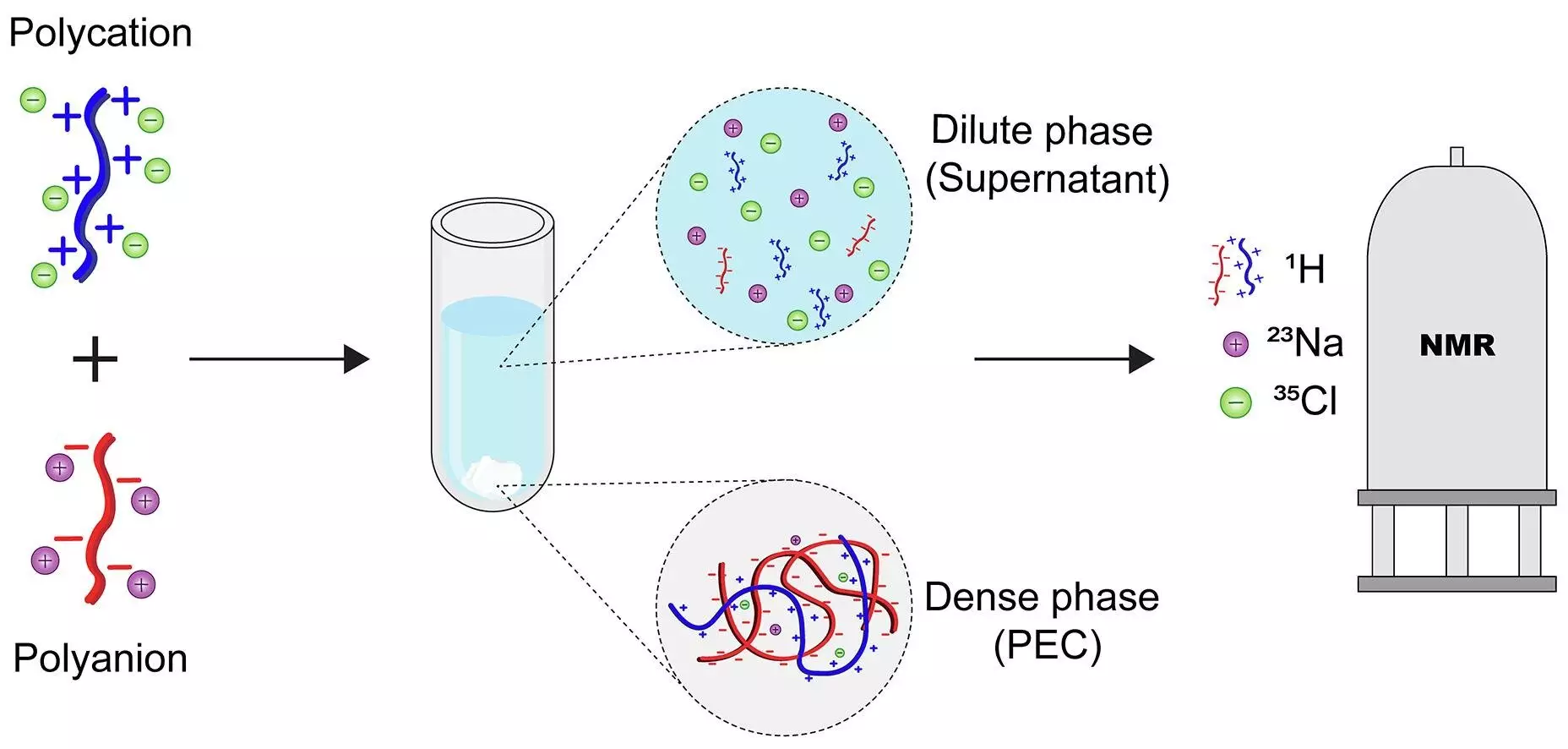For over nine decades, scientists have been intrigued by the mysterious behaviors of polyelectrolyte solutions—mixtures of polymers bearing multiple charged groups. When oppositely charged polymers mingle, they tend to segregate into distinct phases, creating complex structures with valuable industrial applications. Yet, despite the long-standing interest, a comprehensive understanding of how each component—particularly the polymers and their counterions—is spatially distributed within these phases has remained elusive. Traditional analytical techniques often fell short, either disrupting the delicate structures or providing only partial information. This knowledge gap hindered the full exploitation of polyelectrolyte complexes, especially in designing next-generation filtration membranes, controlled-release systems, and sustainable materials.
Innovative NMR Methodophysics: A Paradigm Shift
The recent breakthrough achieved by researchers at the University of Twente offers a transformative perspective. By harnessing the power of nuclear magnetic resonance (NMR) spectroscopy, they have developed a method capable of quantitatively mapping the distribution of all components within these phase-separated systems in a rapid and non-invasive manner. Unlike previous techniques that required labeling or destructive analysis, this new protocol provides a label-free measurement, preserving the integrity of the complex while delivering precise data.
What sets this methodology apart is its efficiency—completing an exhaustive analysis in under 40 minutes. This rapid turnaround dramatically accelerates research cycles, enabling scientists to iterate and optimize material formulations swiftly. Furthermore, the ability to distinguish each component within both phases equips researchers with an unprecedented clarity. They can now accurately identify how polymers and counterions partition between the dense, polymer-rich phase and the supernatant, influencing how these materials behave in real-world applications.
Implications for Material Development and Natural Systems
The significance of this advancement extends beyond mere academic curiosity. It lays a robust foundation for engineering superior materials that leverage the unique properties of polyelectrolyte complexes. For instance, in creating more efficient water filtration membranes, understanding the precise distribution of charged species allows for tailored pore structures and enhanced selectivity. Similarly, designing ion exchange membranes with optimized ion mobility becomes achievable when the internal composition is clearly mapped.
Moreover, the research hints at broader impacts in understanding biological systems. Many natural structures—such as cellular compartments and extracellular matrices—are composed of polyelectrolyte-like components. Unlocking how these natural complexes are organized could inspire biomimetic designs and shed light on fundamental biological processes. The non-invasive nature of the NMR protocol is particularly advantageous here, as it can be applied repeatedly to living systems without harm.
In essence, the work from Twente not only bridges a significant gap in polymer science but sets the stage for innovative applications across environmental, biomedical, and materials engineering fields. It challenges previous assumptions, emphasizing that detailed, quantitative insights are crucial for truly harnessing the potential of polyelectrolyte complexes. As the technology matures, expect a wave of smarter, more sustainable materials derived from an intimate understanding of these fascinating molecular interactions.

